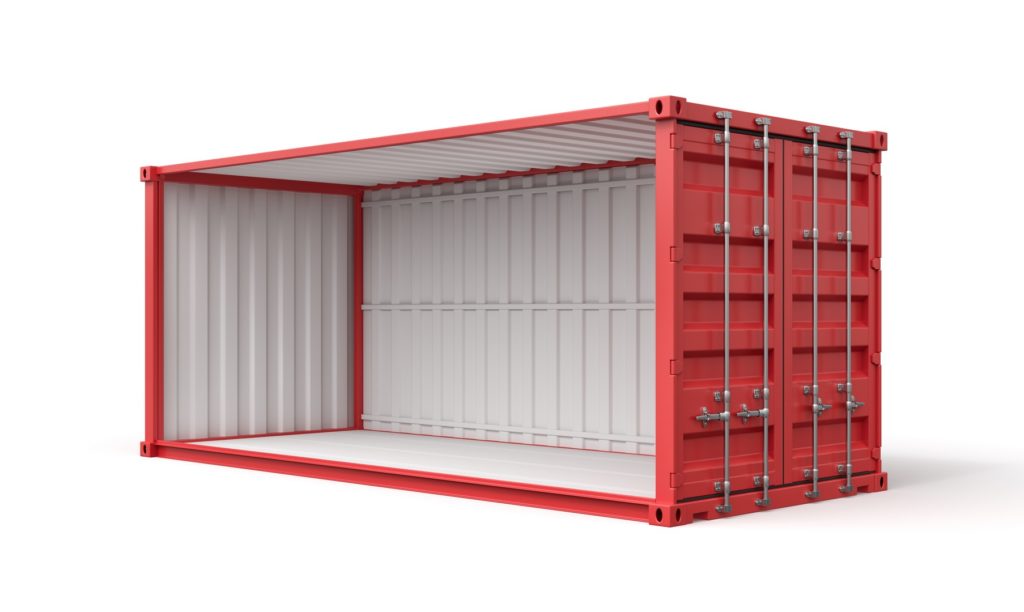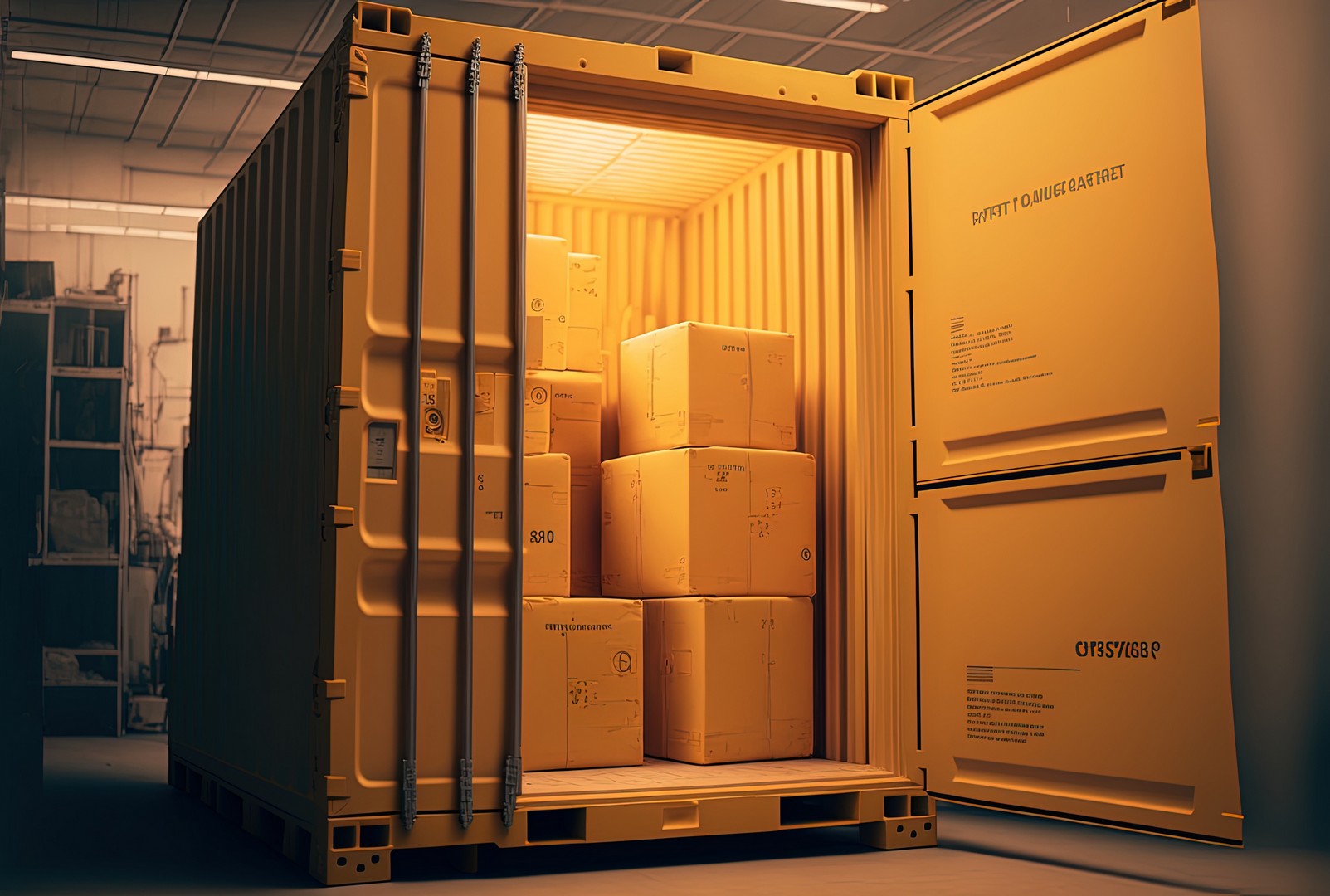Containerized storage refers to using standardized shipping containers to transport goods. These containers are designed to be loaded onto cargo ships, trains, and trucks for transportation.
Containerized storage containers use specially made steel receptacles for easy loading onto various forms of conveyance, such as ocean-going vessels, rail, and road vehicles. Before transportation, the freight is placed in a smaller container and then in a bigger one for extra protection during the journey. This approach allows for the safe and efficient movement of goods, as several smaller containers can be loaded into a single larger one.
History Of Containerized Storage
The logistics and shipping industries have been revolutionized using containerized storage, including a small shipping container. Malcom McLean, a businessman who wanted to simplify the loading and unloading of cargo from ships, pioneered the idea of containerized storage in the 1950s. Before containerization, the freight was manually loaded and unloaded, which required a lot of time and labor. McLean’s concept was to develop a standardized container that could be loaded with freight and then quickly moved from ship to truck or train, disregarding the need for manual handling.
In 1957, the first containerized shipping service was launched. Containerization was soon recognized as a game-changer for the sector. The standardization of containers allowed for considerably faster and more practical loading and unloading of cargo, which significantly decreased expenses and increased the rate at which items could be moved. Additionally, since containers could be sealed and locked to thwart theft and damage, commodities could be transported more securely.

Due to the popularity of containerized shipping, larger cargo ships with a greater capacity to transport more containers were created, further decreasing prices and improving efficiency. Thousands of containers can be transported on board container ships, some of the world’s giant ships today. With annual freight shipments totaling trillions of dollars, container ships are now the backbone of the world commerce system.
The usage of containerized storage has recently started to spread into more contexts, such as urban and industrial ones. Shipping containers are currently being converted into temporary retail spaces, offices, and even homes, while containerized storage units are employed as a modular architecture. Utilizing containerized storage makes it possible to design one-of-a-kind, adaptable rooms that are simple to move and rearrange as required.
Features Of Containerized Storage
Containerized storage units have several features that make them well-suited for use in the construction, logistics, and shipping industries. These include:
- Standardization
Typical dimensions of containerized storage units are 8 feet wide, 8.5 feet high, and 20 to 40 feet long. This standardization enables simple loading and unloading of cargo and the best possible use of available space. Being easily stackable is another feature of shipping containers that makes them perfect for usage in the shipping and logistics sectors.
- Durability
Containerized storage units are constructed with durable materials such as steel, making them resistant to harsh weather, rust, and corrosion. These units are built to endure transportation and storage and have a long lifespan.
- Mobility
Containerized storage units are perfect for usage in the logistics and shipping sectors since they can be easily transported by truck, train, or ship. They can be swiftly loaded and unloaded, saving time and money. On a construction site, they are also simple to relocate.
- Modularity
Because containerized storage units are modular, assembling and disassembling them is simple. As a result, they’re simple to move and, if necessary, may be rearranged to accommodate various storage requirements. Either permanent or temporary constructions can be made out of them. This flexibility allows the storage unit’s location to be changed as needed.
- Cost-Effectiveness
Since they’re made to use space as efficiently as possible and eliminate the need for various transportation and storage options, containerized storage facilities are frequently more affordable than traditional ones. Additionally, because they’re constructed of sturdy materials, they can survive adverse weather conditions and stay longer, lowering the need for pricey replacements. Additionally, their versatility allows for many uses, which lowers overall expenses.
Benefits Of Using Containerized Storage
Numerous industries now embrace containerized storage as a common form of storage. It gives various sectors a competitive edge because it’s a straightforward yet efficient method of storing and moving items. The advantages of employing containerized storage are listed below in further detail.
- Environmental Impact
Steel, a recyclable material, is used to construct containerized storage facilities. It’s not necessary to extract fresh raw materials after a container has reached the end of its useful life because it can be recycled and utilized to make new containers. Using containerized storage units can also lessen the demand for further development, positively influencing the environment.
- Easy Maintenance
Containerized storage units are easy to maintain and built with durable materials, requiring little maintenance. The size standardization also makes them easy to repair and repaint to give them a new look.
- Space Utilization
Containerized storage units are designed to maximize space utilization; this is particularly useful in areas where land is scarce or expensive. They can be stacked on top of each other, saving space and reducing costs.
- Disaster Management
Containerized storage units can be used as temporary or permanent structures, making them ideal for disaster management. They can provide emergency housing, storage, and other facilities in a natural disaster.
- Customizable Feature
Containerized storage units can be modified to fulfill particular requirements; they can be equipped with insulation, plumbing, and electrical systems, and other characteristics to make them better suited for certain types of storage and transportation. Climate control, lighting, and other amenities can be added to make them cozier and more practical.
- Security
Containerized storage units are safe and long-lasting by design, making them perfect for keeping costly or delicate items. They might be equipped with locking mechanisms, alarms, and other security features to safeguard the contents. They’re additionally challenging to break into or harm due to their steel construction. Some options to add more security include:
- Heavy-Duty Locking System
This lock system can include a combination lock, key lock, or high-security padlock, which can be placed on the doors or the container’s corners. This will prevent unauthorized access and protect the contents from theft or damage.
- Security Camera System
These cameras can be placed on the exterior or interior of the container, providing surveillance of the contents. This can be especially useful for monitoring high-value or sensitive goods like electronics or medical equipment.
- Ventilation System
This can help keep the contents dry and prevent mold or mildew. This is especially important for containers used to store food or other perishable goods.
- GPS Tracking System
This can track the container’s location and ensure it’s on the right path and not being tampered with.
Items Placed In Containerized Storage
Containerized storage units are a creative and adaptable way to move and store a variety of commodities. With their ability to withstand harsh weather conditions and provide efficient transportation, containerized storage units are becoming essential for businesses looking to optimize their operations. Some common items that are often stored or shipped in containerized storage include:
- Raw Materials For Manufacturing
For manufacturing, you can keep raw materials like steel, lumber, and other industrial supplies in containerized storage units. The manufacturing process calls for using these raw materials, which are often kept in bulk and utilized at various production stages. These storage units are built to be sturdy and weatherproof to safeguard the raw materials from harm.
- Machinery And Equipment
Large machinery and equipment, including that used in mining, agriculture, and construction, can be stored and transported using these units. For these things, containerized storage units are the ideal answer because they’re simple to load and move by ship or truck. Additionally, they have enough strength to shield the machinery from harm while transported.
- Consumer Goods
Consumer goods, including electronics, appliances, and furniture, are frequently transported and stored in containerized storage facilities. These storage containers are made to be airtight and weatherproof to prevent damage to the items during shipment. Furniture, clothing, and other household items can be transported and stored in containerized units for personal and domestic storage.
- Food And Agriculture Products
Food and agricultural items like grains, fruits, vegetables, and meat are frequently transported in containerized storage units. These units have a temperature control system that keeps the food goods fresh. They’re excellent for usage in the agriculture and food industries since.
- Hazardous Materials
As long as the container is appropriately approved and fitted with the required safety safeguards, it can also transport and store hazardous materials, including chemicals, fuels, and radioactive materials. These containers comply with the rules for transporting dangerous products.
- Military Equipment And Supplies
Military equipment and supplies can be transported in containerized storage units. These units shield military equipment from damage during shipment and are made to be strong and highly secure. Additionally, they could store and move military supplies like food, water, and weapons.
Conclusion
Containerized storage is a flexible, affordable option for keeping and transferring items. It’s an excellent solution for various sectors and uses because of its robustness, simplicity of customization and maintenance, and efficient use of space. These units serve as more than just a means of storage; they’re flexible tools that can satisfy various demands, making them an invaluable asset for any person or company.
Would you like to publish your projects? Get Started Here







